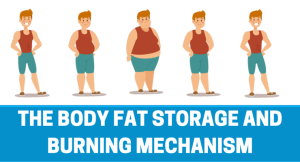
Understanding the Science of Fat Loss
When it comes to losing fat, many people often find themselves confused or lost in a sea of conflicting information. There are countless diet plans, workout routines, and supplements promising quick and easy fat loss. However, it is essential to understand the science behind fat loss to achieve sustainable and long-term results. In this article, we will delve into the science of fat loss, which is crucial to developing an effective and efficient approach to shedding those extra pounds.
The Basics of Fat Loss
To understand fat loss, we must first grasp the basic concept of energy balance. Energy balance refers to the relationship between the energy you consume through food and the energy you expend through physical activity and bodily functions. To lose fat, one needs to create an energy deficit, where you consume fewer calories than you burn. This deficit forces your body to access its stored fat as a source of energy.
Caloric Deficit and Macronutrients
The foundation of fat loss lies in creating a caloric deficit. This means consuming fewer calories than your body needs to maintain its current weight. A safe and sustainable caloric deficit ranges from 500 to 1000 calories per day, resulting in around 1-2 pounds of fat loss per week. It is crucial, however, to ensure that you are still meeting your body’s nutritional needs.
When it comes to fat loss, the types of macronutrients you consume play a significant role. Protein, carbohydrates, and fats are the three main macronutrients that provide energy to the body. Protein is particularly important for fat loss as it helps preserve muscle mass and has a higher thermic effect, meaning that more calories are burned during its digestion and absorption.
The Role of Exercise
While creating a caloric deficit through diet is essential, exercise plays a complementary role in fat loss. Regular physical activity helps burn calories while building lean muscle mass. It also boosts your metabolism, allowing you to burn more calories throughout the day, even at rest.
Incorporating both cardiovascular exercises, such as running or cycling, and strength training activities, like weightlifting or resistance training, is recommended for optimal fat loss. Cardio exercises primarily burn calories during the workout, while strength training helps increase muscle mass, which, in turn, increases your resting metabolic rate.
The Importance of Sleep and Stress Management
Believe it or not, sleep and stress management also play a significant role in fat loss. Lack of sleep can disrupt the hormones responsible for regulating appetite and metabolism, leading to increased cravings and a slower metabolism. Aim for 7-9 hours of quality sleep each night to promote fat loss.
Stress, on the other hand, triggers the release of cortisol, a hormone that can increase appetite and promote fat storage around the abdominal area. Incorporating stress-reducing practices, such as mindfulness, meditation, or engaging in hobbies, can help manage stress levels and support fat loss efforts.
The Myth of Spot Reduction
It is essential to debunk the myth of spot reduction. Many individuals believe that targeting specific exercises, such as endless crunches for a flat stomach, will burn fat in that specific area. However, fat loss occurs uniformly throughout the body, and no exercise can solely eliminate fat from a particular region.
Ultimately, understanding the science of fat loss is key to successfully reaching your weight loss goals. By creating a caloric deficit through diet, incorporating exercise, prioritizing sleep and stress management, and avoiding the myth of spot reduction, you can develop a sustainable and effective fat loss strategy. Remember, patience and consistency are vital, as healthy and long-lasting results take time to achieve.

